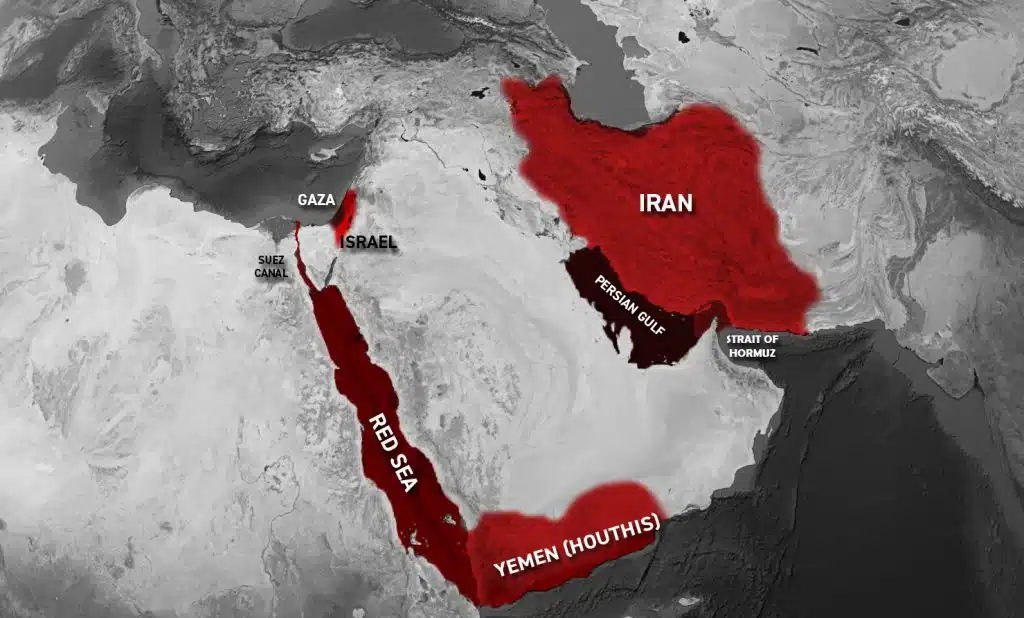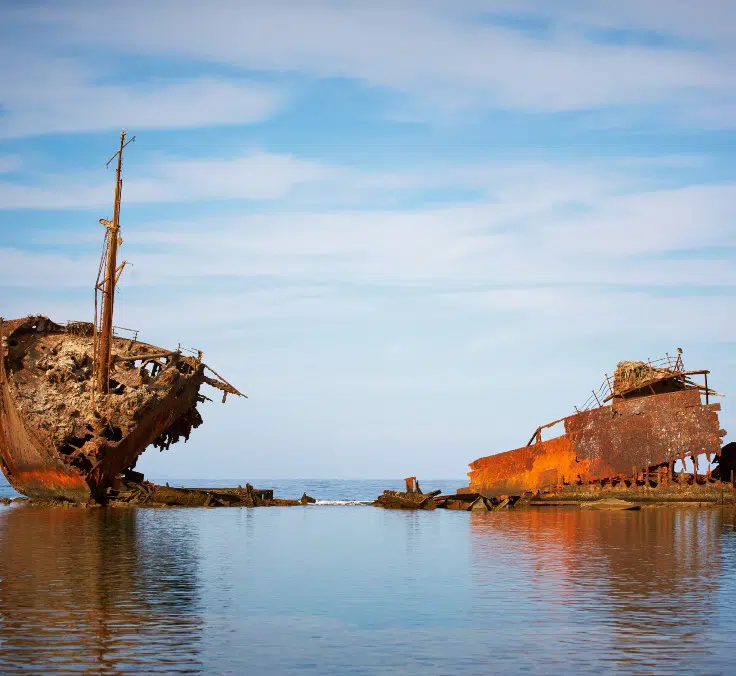INSURANCE| 04.30.2024
The tensions in the Middle East are impacting the risks associated with maritime traffic
The sea is the most common route through which the goods and materials we consume are transported, so the major maritime routes are of vital importance for sustaining international trade. The conflicts in the Middle East, with Israel’s offensive on Gaza, coupled with the exchange of attacks with Iran, have been felt in some of the world’s key passages, such as the Red Sea and the Strait of Hormuz. This movement has already impacted the companies that insure these risks and the traffic in those areas.
The effects of geopolitical complications are limited for the insurance sector beyond the countries involved, and they would come indirectly, as explained by MAPFRE Economics. One of the most notable consequences would be an increase in inflation, largely caused by a rise in oil prices, which would once again impact companies in terms of their costs and financial results. Higher inflation could also change the economic scenario and aspects such as monetary policies, impacting the portfolios of insurance companies, as explained by MAPFRE Economics.
On the other hand, the marine insurance sector works on a daily basis with the risks of war. They provide coverage for damages resulting from navigation risks, including a ‘war and strikes’ clause, encompassing acts of war, armed violence, vessel capture, or terrorism, among other scenarios arising from regional conflict situations.

In fact, moments like the current one demonstrate the importance of this sector, says Javier Alonso, Head of Marine at MAPFRE RE, since international trade and navigation through certain areas would hardly be possible without insurance protection for cargo and vessels that can be worth hundreds of millions of euros. For example, the departure of Ukrainian wheat when their ports reopened was backed by specialized insurers.
Moreover, it’s a highly technical insurance, with conditions and controls, to manage potentially high risks. Among them is the establishment of zones – the most dangerous ones – where insurance is not automatic and it’s necessary to communicate that to the insurer. Sometimes, this entails an additional premium payment to adjust to a risk that changes as rapidly as the political situation.
The Red Sea and the Strait of Hormuz, critical points due to the threat of the Houthis and Iran
When Hamas attacked Israel on October 7th in a terrorist action that triggered a violent Israeli response, the echoes of the conflict reached the entire region. Not so much on the coasts of Israel and Gaza, where beyond the human drama, Israel’s capabilities make traffic relatively safe, but in areas vulnerable to attacks by Palestine’s allies.
- The Red Sea, an area that had long been on insurers’ Listed Areas due to piracy, returned to the spotlight when Yemen’s Houthis captured an Israeli-linked merchant ship in November, which remains hijacked along with its 25 crew members. It was the most notable case, but this Yemeni faction has continued to attack ships that may be related to Israel or its allies with missiles. These attacks, characterized by being indiscriminate and of low precision, have targeted several Western ships and have raised the risks in the area.
- Further to the east, the escalation between Iran and Israel and their exchange of attacks in April have marked a turning point for traffic in the Persian Gulf. This area, which hosts one of the world’s largest productions of gas and oil, is especially critical for trade in the Strait of Hormuz, a bottleneck that forces all ships to pass very close to the Iranian coasts. On April 13th, this threat materialized when Iranian authorities seized a ship also linked to an Israeli businessman.
“There are two different situations; in the Strait of Hormuz, every ship, especially Western ones, is a potential target for the Houthis, although it’s a more limited risk that can also be avoided by circumnavigating Africa. In the Strait of Hormuz, there is a permanent uncertainty when passing in front of Iran,” explains Javier Alonso.
Both have had repercussions on maritime insurance, “a small market very much tied to current events,” as described by the head of the area at MAPFRE RE. While tensions and statements between governments or opposing factions are common in the Middle East, ship seizures, especially those carried out by Iran, have impacted the market, which “reacts more to actions than to words,” Javier Alonso explains.
The increased danger has resulted in ‘hot zones’ where previously only notification to the insurer might have been necessary, now requiring an additional premium for passage through them. This surcharge can average between 1% and 4% of the insured value, a significantly high figure by industry standards.
The increase in risk has had an effect on the maritime routes themselves. The Red Sea serves as the gateway to the Suez Canal, a crucial passage that has already seen a decrease in traffic, as many shipowners opt for the route along the southern coast of Africa, which is longer and more expensive. On the contrary, maritime trade with the Persian Gulf, including a significant volume of oil transportation, has no alternative to navigation through the Strait of Hormuz.
RELATED ARTICLES:




